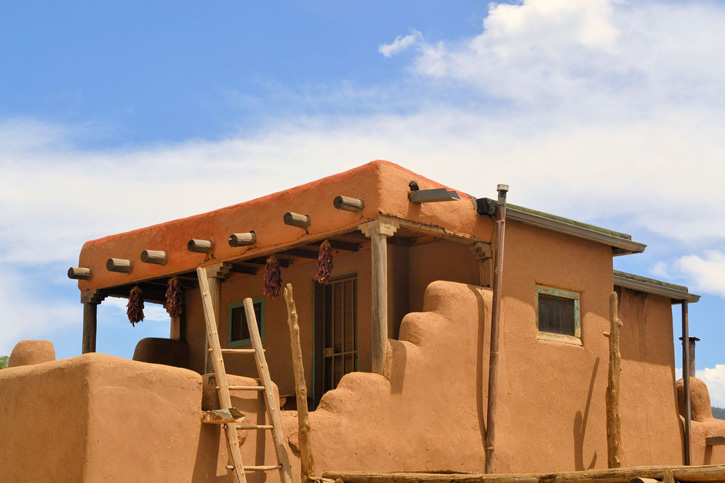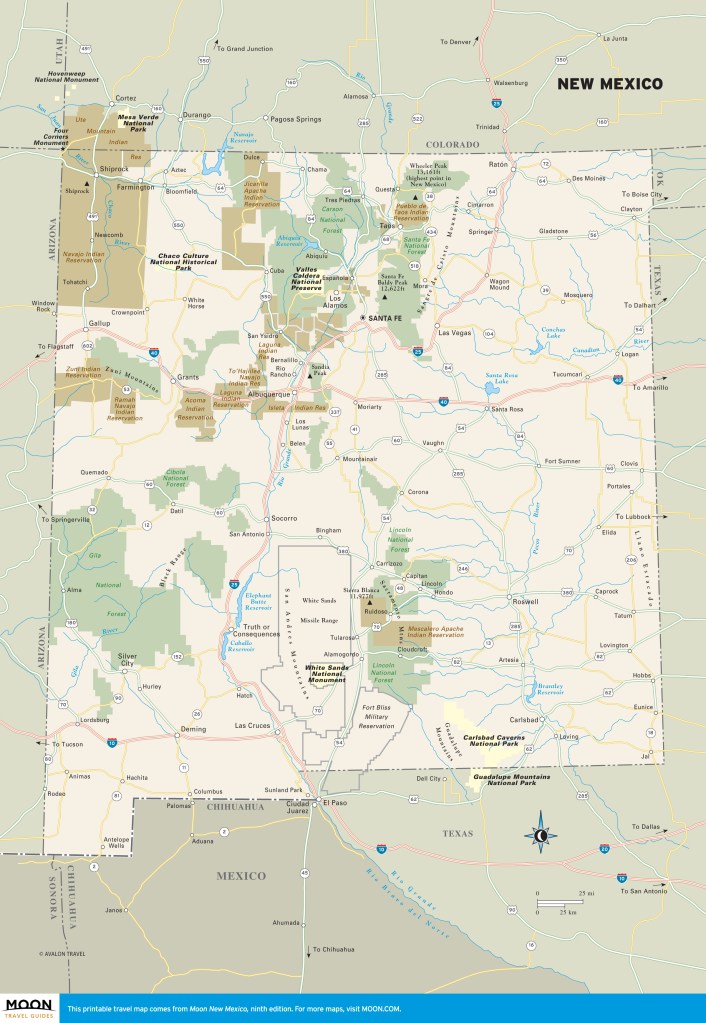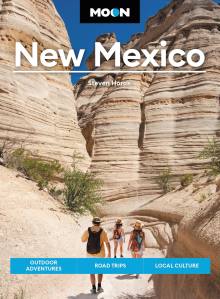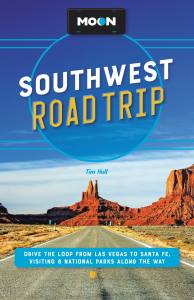Visiting New Mexico Reservations and Pueblos
When visiting reservations and pueblos, remember that you are not at a tourist attraction—you are walking around someone’s neighborhood. So peeking in windows and wandering off the suggested route isn’t polite. If you want to take photos, you’ll usually need a camera permit, for an additional fee. Always ask permission before taking photos of people, and ask parents, rather than children, for their consent. Virtually all pueblos ban alcohol.

Some pueblos are more welcoming than others. Some are open year-round, whereas others are completely closed, except for some feast days. It’s flawed logic to seek out the less-visited places or go in the off times in order to have a less “touristy” experience. In fact, the most rewarding time to visit is on a big feast day—you may not be the only tourist there, but you have a better chance of being invited into a local’s home.
Some Pueblo Indians find loud voices, direct eye contact, and firm handshakes off-putting and, by the same token, may not express themselves in the forthright way a lot of visitors are used to. Similarly, a subdued reaction doesn’t necessarily mean a lack of enthusiasm.
Don’t drive off road for any reason—that’s somebody’s land and livelihood. It’s a good idea to hire a guide to take you around, as there are can be places that are off limits without one.
Dances, Feasts, and Festivals
The following are only approximate schedules—dates can vary from year to year. Annual feast days typically involve carnivals and markets in addition to dances. Confirm details and start times—usually afternoon, but sometimes following an evening or midnight Mass—with the Indian Pueblo Cultural Center (505/843-7270) before setting out.
Newsletter Signup
By clicking ‘Sign Up,’ I acknowledge that I have read and agree to Hachette Book Group’s Privacy Policy and Terms of Use
Vicinity of Albuquerque
- January 1: Jemez and Matachines
- January 6: Most pueblos hold various dances
- February 2: San Felipe, various dances for Candlemas (Día de la Candelaria)
- Easter: Most pueblos hold various dances
- May 1: San Felipe, Feast of San Felipe
- June 13: Sandia, Feast of San Antonio
- June 29: Santa Ana, Feast of San Pedro
- July 14: Cochiti, Feast of San Bonaventura
- July 26: Santa Ana, Feast of Santa Ana
- August 2: Jemez, Feast of Santa Persingula
- August 15: Zia, Feast of the Assumption of Our Blessed Mother
- September 4: Isleta, Feast of Saint Augustine
- September 8: Isleta (Encinal), Feast of the Nativity of the Blessed Virgin
- November 12: Jemez, Feast of San Diego
- December 12: Jemez and Los Matachines
Taos Pueblo
Taos’s biggest annual festivity (for which many local businesses close) is the Feast of San Geronimo, the patron saint assigned to Taos Pueblo by the Spanish when they built their first mission there in 1619. The holiday starts the evening of September 29 with vespers in the pueblo church and continues the next day with footraces and a pole-climbing contest. La Hacienda de los Martinez usually reenacts a 19th-century Taos trade fair, with mountain men, music, and artisans’ demonstrations.
- January 1: Turtle dance
- January 6: Deer or buffalo dance
- May 3: Feast of Santa Cruz, corn dance
- June 13: Feast of San Antonio, corn dance
- June 24: Feast of San Juan, corn dance
- July 25-26: Feast of Santiago and Santa Ana, corn dances and footraces
- September 29-30: Feast of San Geronimo
- December 24: Sundown procession and children’s dance
- December 25: Various dances
Zuni Pueblo
Zuni’s largest event of the year is the ritual of Shalako (also spelled Sha’la’ko). This marks the end of the agricultural season and the beginning of winter in late November or early December. Although many of the prayers and dances take place in areas closed to visitors, it is still a remarkable time to visit the pueblo.
Other secular events throughout the year include the Zuni Cultural Arts Expo, in late July or early August; the McKinley County Fair, also in August; the Ancient Way Fall Festival, an arts and harvest festival all along Highway 53 in early October; and the Holiday Arts Market, in early December. The visitors center can confirm dates.

Newsletter Signup
By clicking ‘Sign Up,’ I acknowledge that I have read and agree to Hachette Book Group’s Privacy Policy and Terms of Use
Pin it for Later




